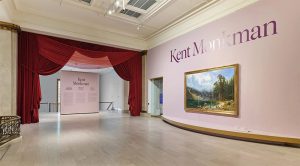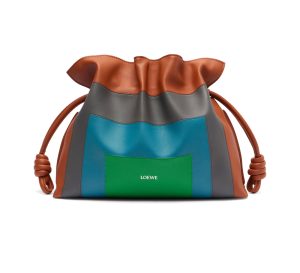Lauren Meeks Has the Answers
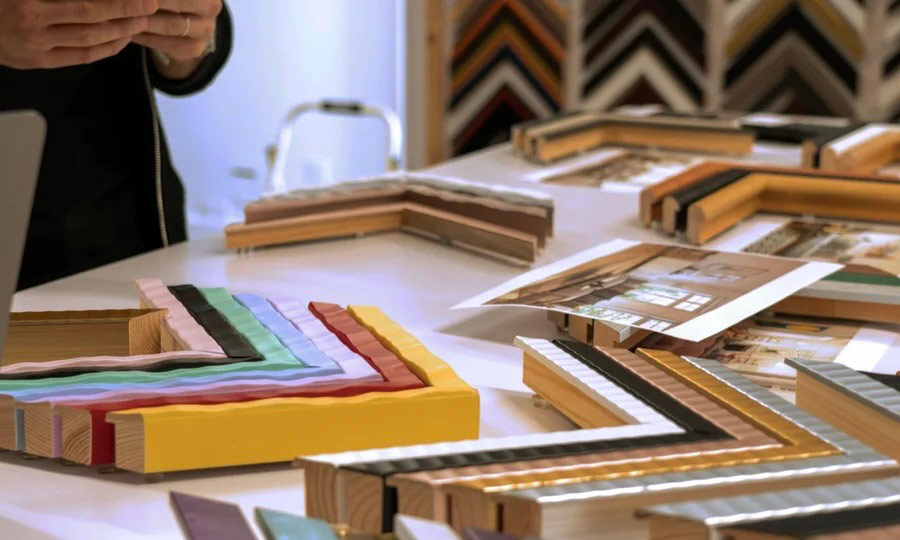
Each piece in your collection calls for a unique combination of materials and framing styles. Only a skilled framer can draw from their years of experience to tell you what’s best for the lifelong preservation of cherished (and valuable) pieces, especially delicate works on paper.
Based in Miami, Lauren Meeks, and her father, Stephen, are some of our most trusted collaborators. We turn to their 38 year old family-run business for all our Florida based framing needs, including our most intricate and difficult projects.
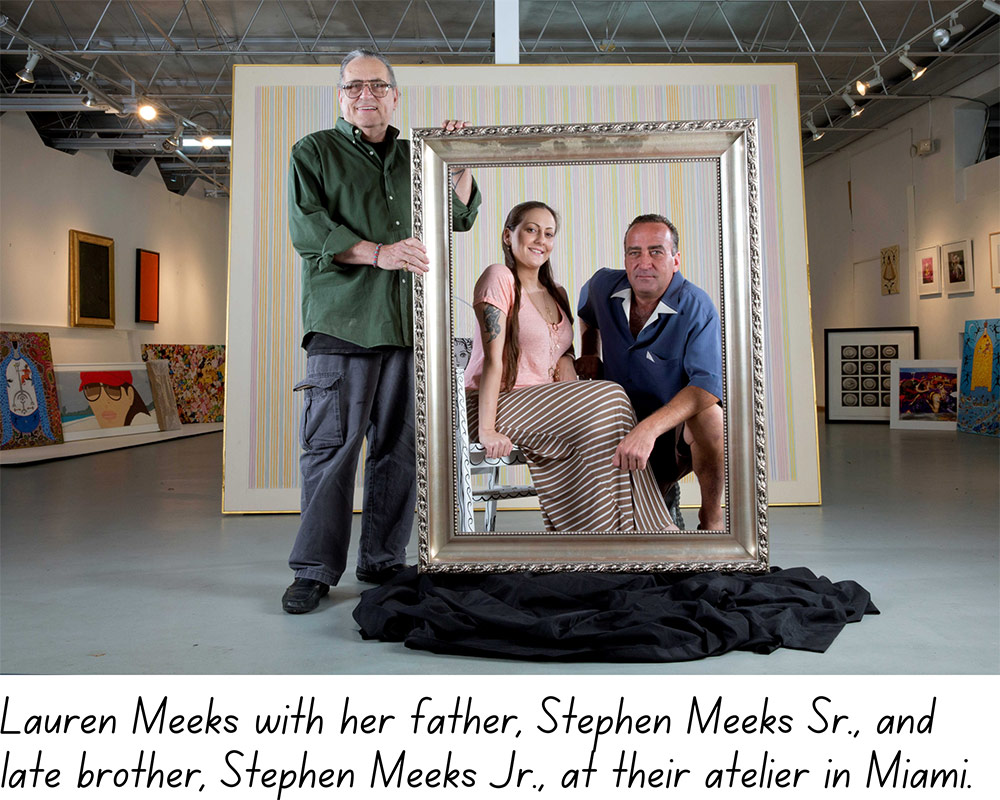
We know framing can be an obscure topic, so we asked Lauren to tell us about her fundamental do’s and don’ts for archival-quality framing. Read on to discover everything an art lover needs to know about framing works on paper.
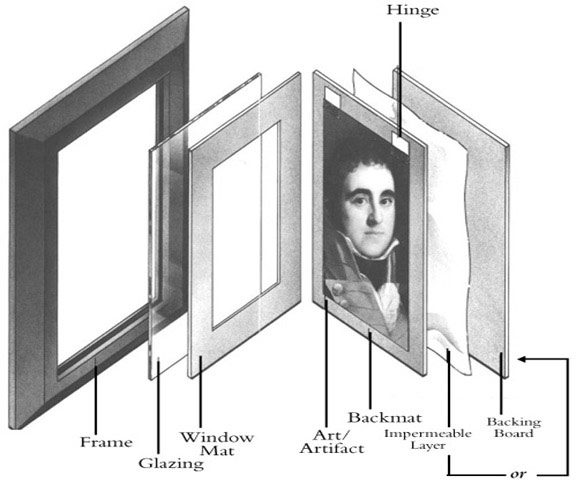
Some helpful terms:
Backing: the material that sits behind the piece of art.
Float: presentation style where the piece sits in the center of an uncut mat board. Ideal for pieces where you want the edges to be visible.
Glazing: the transparent material that protects the front of the artwork, commonly made of glass of acrylic.
Matting: typically made of paper, linen, or silk, matting serves as a border around the piece of art. it enhances presentation while protecting the piece from direct contact with the frame and glazing.
Mounting: the process of adhering an artwork to a backing.
Bleed: where the ink reaches the edges of the paper.
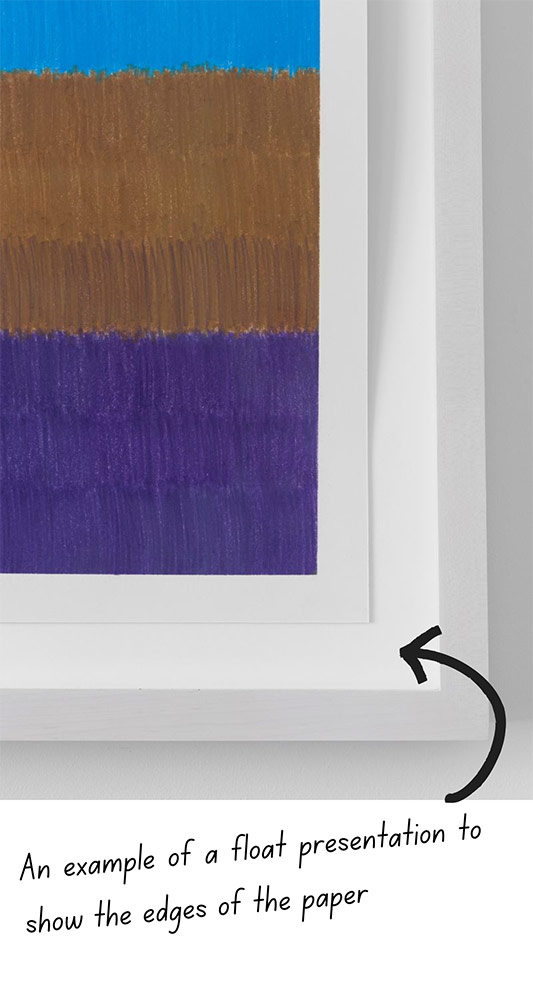
Q: What should people consider when choosing a frame?
LM: People often say to frame for the art, by which they mean make the frame inconspicuous. White on white is always a popular option as it looks clean and doesn’t detract from the work. However, I think the white border of a matting is enough to create some negative space around the work and not overwhelm the eye- then you’re free to have a bit of fun with the frame itself. You need to find a happy medium between respecting the piece and your personal style. I always say don’t be afraid to dress it up- think of it like adding a necklace to a great outfit.
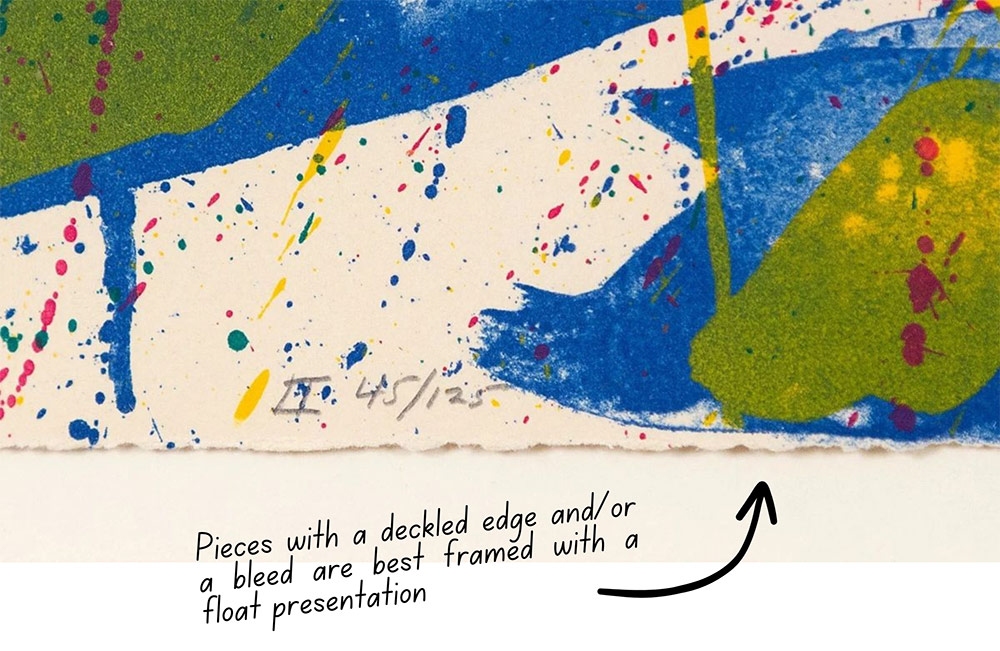
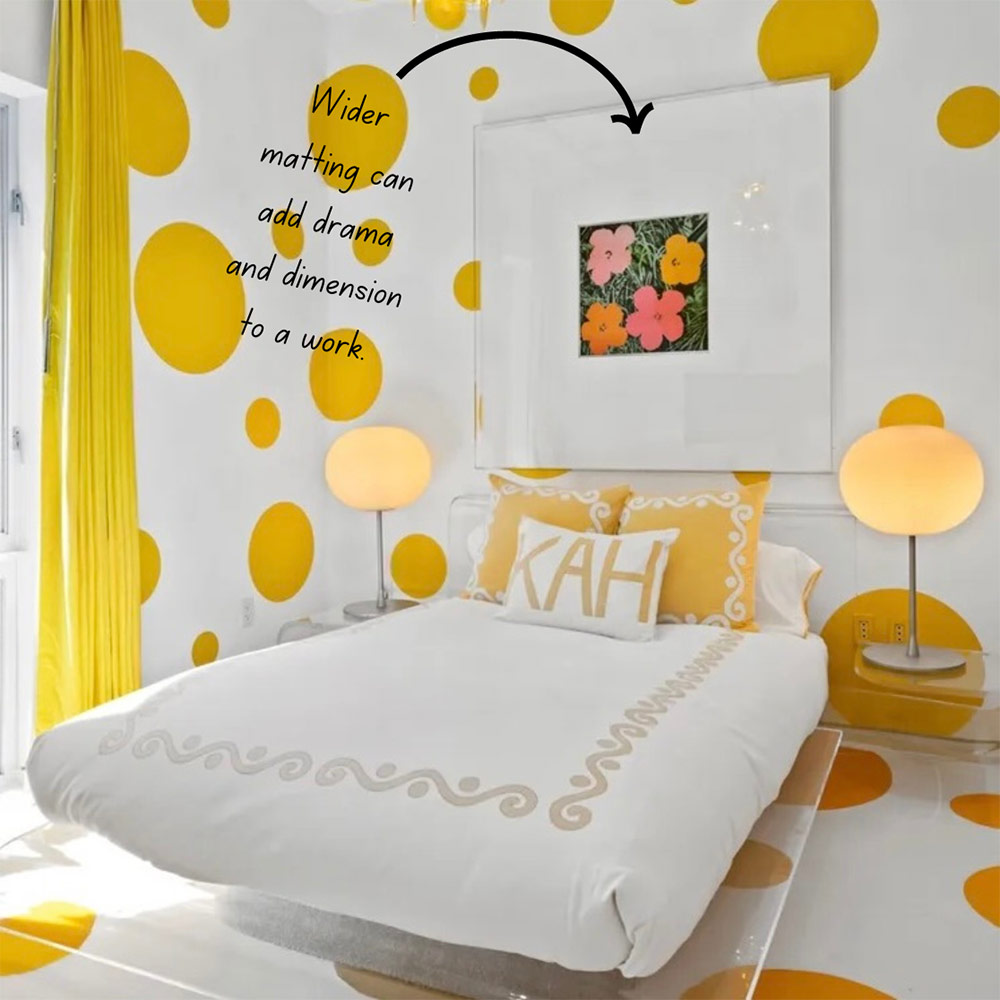
Q: Do you always need to use matting?
LM: Matting is one method of creating a bit of space between the work and the glazing. Glazing should never make direct contact with a work of art. Such contact could cause damage to a work or promote the growth of mold due to limited airflow.
That said, visible matting is a preference and whether or not you use it depends on the visual effect you want to achieve. wider matting will create a more dramatic effect, while a more slender style will keep the focus on the piece. My rule of thumb is to make the matting double the width of the frame. If the print already has a white border (ie the image doesn’t bleed to the edges of the paper), you can lay the matting over the border so that it’s concealed. Float presentations, on the other hand, are used when you want to see the edges of the paper. This type could include matting or not, but the matting would sit an inch or so away from the edge of the paper.
Q: What material is best for backing?
LM: At our workshop, we only use a material called coroplast. It’s inert, it doesn’t offgas, and it’s made of PVC with a honeycomb structure, like cardboard. This is a transparent, archival-grade product, different from a regular coroplast with a snowy white finish. Another common backing material is Acid-Free Foamcore, which I would not recommend for long-term conservation. It is essentially paper, so it’s susceptible to punctures and will absorb any moisture that is introduced, meaning it can warp and let moisture into the inner chamber.

Paper products are essentially pulp, which means they’re acidic and can discolour the artwork over time. Coroplast is extremely dense and it’s PVC so it won’t puncture, absorb moisture, or warp. It’s the best bet for the long-term conservation of your artwork.
Q: Will dry-mounting my print or photograph devalue my artwork?
LM: Very good question! Dry-mounting is a very sensitive process. Scary sometimes. It is irreversible and can cause a slight devaluation to the artwork. Any signature on the back of a work will be covered when mounted.
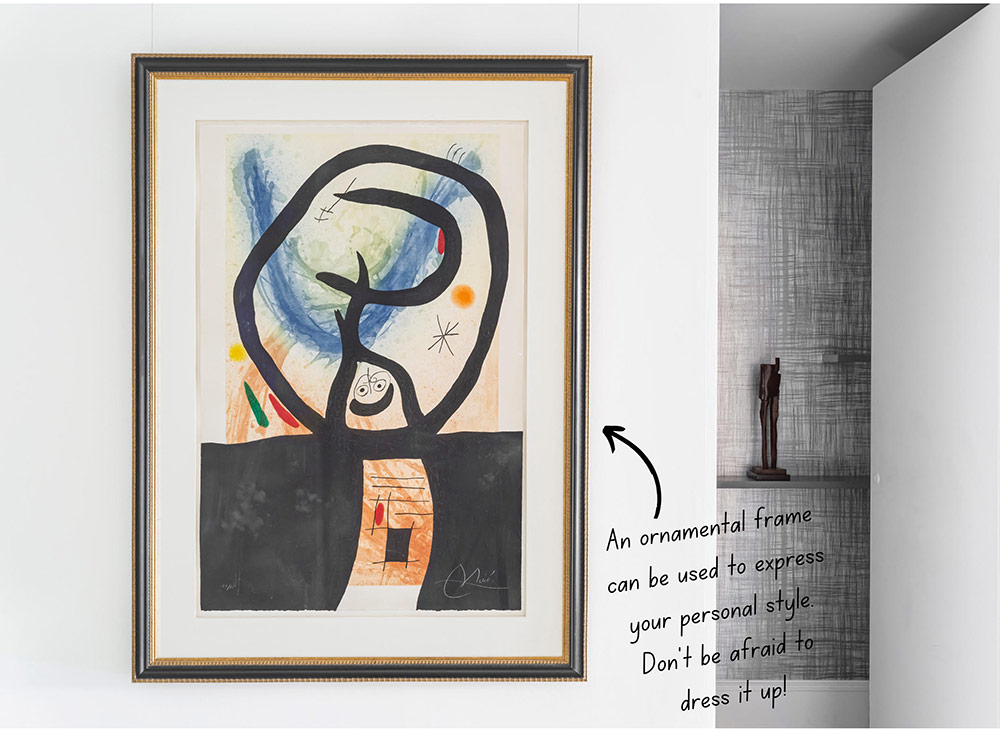
Q: Do you always have to mount a work on paper to achieve a float presentation?
LM: For float presentations, the alternative that I would recommend to dry-mounting is the hinge mount, which means that the print is taped into place on the backing with folded hinges. With this method, the print can be removed from the backing even years later. Additionally, the hinge mount allows the paper to expand and contract with differing humidity levels, preventing rips and tears. There are hinges that come pregummed, like linen backed hinges and Abaca.SA hinges. The Japanese hinge is a more specialized method which uses a freshly cooked wheat startch paste. This is a very technical process that needs to be executed by a seasoned master, but it is the most archival of the three.
Q: What type of glazing is best?
LM: You have different types of glazing for different purposes, but we use acrylic for most applications. Using acrylic is the safer option as it won’t shatter. Glass is heavy and delicate, and becomes very unstable on pieces with larger dimensions. Most glass glazing is only 2.5mm, which is extremely thin. The threat of shattering glass is dangerous for transportation, for passersby, and for the art itself. Anything of high value is best glazed with acrylic.
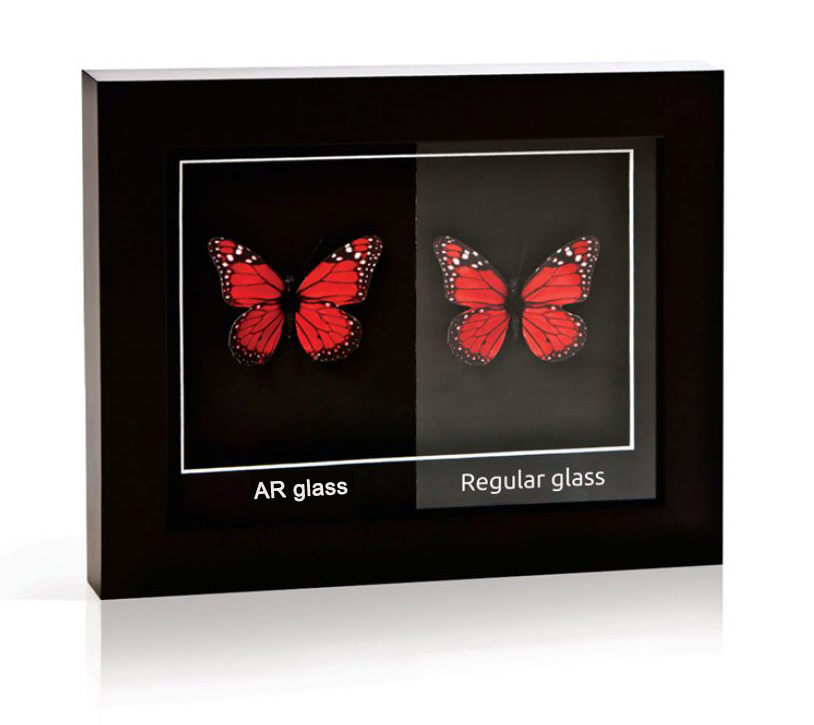
Q: Reflective or anti-reflective glazing?
LM: This will depend on your piece and where it is placed in your home. If the piece will be placed in a sun drenched room with lots of windows and competing light sources, all you’re going to see with reflective glazing is the relfection of your light source (chandelier, window, etc). You also wouldn’t want reflective glazing for a piece that has large, dark areas because it will act like a mirror. While anti-reflective glazing can be costly, it’s worth it. Anti-reflective acrylic glazing and anti-reflective museum glass are the only two products I’d use for museum grade framing.
Q: What level of UV protection should you look for when choosing a glazing?
LM: UV light is harmful to artworks because over time it can cause fading or discolouration. UV protective glazing blocks the UV rays from reaching the artwork, which helps preserve it’s vibrancy. There are different levels of UV protection on the market, but to me there’s only one. Any number below 99% will not achieve true UV protection. While they may seem high, 72% or 95% will not do the work justice, it has to be 99%.
Q: Does the UV filter of glazing, glass or acrylic, expire?
LM: Yes, UV filters have a shelf life. They can expire anywhere between 7 and 12 years depending on their contact with UV rays. 7 years for direct contact and 12 years for more indirect contact.
A trusted framer is a must for any serious collector. For high-quality artworks, you want to work with someone who is trained in archival framing practices and who you can rely on to ensure the long-term conservation of your cherished pieces. Working with an art advisor is a great way to guarantee you’re introduced to bona-fide professionals who provide top-quality work. With 38 years under their belt, Lauren and her family are just the kind of professionals we at RRFA love collaborating with!

